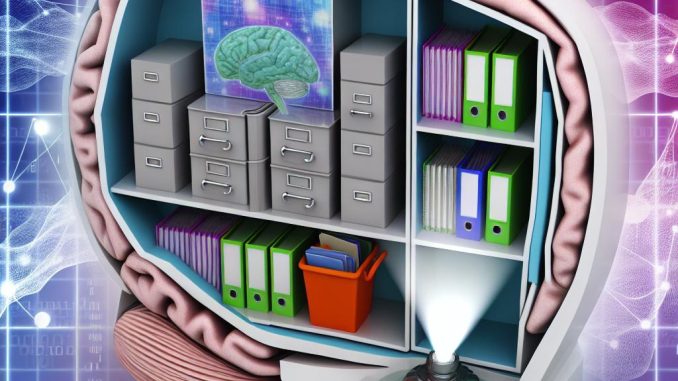
Introduction to Memory Storage in the Brain
Memory is a fundamental aspect of human cognition, encompassing the storage and retrieval of information. The brain’s ability to record, retain, and recall experiences is a complex process involving various regions working in tandem. Understanding these processes provides insight into how memories shape behavior and cognition.
The Role of Neurons and Synapses
At the core of memory storage are neurons, the brain’s nerve cells, which communicate through synapses. When a memory is formed, neurons create connections via synapses through a process known as synaptic plasticity. This dynamic process includes strengthening or weakening synapses in response to increases or decreases in their activity.
Long-Term Potentiation and Depression
Two key mechanisms that facilitate synaptic plasticity are long-term potentiation (LTP) and long-term depression (LTD). LTP enhances the transmission between neurons after repeated stimulation, making it a critical mechanism for consolidating memories. In contrast, LTD involves a decrease in synaptic strength and plays a role in memory unlearning and erasure, helping to refine and manage the information stored.
Brain Structures Involved in Memory
Several brain regions are critical to memory formation and retrieval processes. Each structure has a specialized function that contributes to a cohesive memory system.
The Hippocampus
The hippocampus is a central player in converting short-term memories into long-term ones, a process known as memory consolidation. This structure is particularly involved with spatial memory and navigation—a skill crucial for understanding our physical surroundings. The hippocampus is often compared to a map, guiding spatial orientation and contextual memory, ensuring humans can navigate both their environment and mental landscapes efficiently.
The Prefrontal Cortex
Located in the front part of the brain, the prefrontal cortex helps orchestrate thoughts and actions in accordance with internal goals. It plays a significant role in working memory, which is the ability to hold and manipulate information over short periods. This region functions like a mental workspace, where information is temporarily stored and processed to solve problems, make decisions, and plan future actions. The prefrontal cortex integrates information from various sensory inputs to form a cohesive representation of the current task at hand.
The Amygdala
Memories associated with emotions, particularly fear responses, are heavily influenced by the amygdala. Emotional experiences often result in more vivid memories due to the amygdala’s mediation of emotional processing, thereby enhancing the consolidation process by interacting with the hippocampus. The amygdala serves as a crucial mediator between emotions and memories, imbuing experiences with emotional significance and thus making them more likely to be remembered.
Memory Retrieval
Recalling a memory is a reconstructive process, often involving the activation of the same regions originally engaged during the encoding of the memory. Memory retrieval is akin to piecing together a puzzle, where the brain uses inputs from multiple regions to recall a coherent sequence or piece of information.
Cues and Reconstruction
Memory retrieval relies on cues, which can be sensory or contextual. These cues trigger the reconstruction of stored data, allowing for recall. However, this process is subject to distortions and biases, illustrating that memories can change over time. The reconstructive nature of memory explains why two people might remember the same event differently; their unique experiences and perspectives could guide how they piece together their recollections.
The Influence of Sleep on Memory
Sleep plays a critical role in memory consolidation. During sleep, particularly the rapid eye movement (REM) and slow-wave stages, the brain processes and stabilizes memory traces, reorganizing and integrating them into existing neural networks. Sleep can be viewed as a time of intense neural housekeeping, where the brain filters and solidifies important memories while discarding less critical ones to maintain neural efficiency.
The Process of Consolidation During Sleep
During the sleep cycle, especially in deep sleep stages, the hippocampus replays recent experiences to the cortex, allowing long-term memories to form. This consolidation during sleep is vital for learning because it helps transition memories from short-term to long-term storage. Additionally, REM sleep is associated with the processing of emotional memories, enhancing the ability to handle stress and adapt to new challenges.
Conclusion
The brain’s approach to storing and retrieving memories is a multifaceted process involving complex interactions between neurons, synapses, and specialized brain structures. Advances in neuroscience continue to unravel the intricacies of memory, providing a deeper understanding of cognitive functions and their implications for human behavior. For further reading on how these systems integrate, visit the BrainFacts website, which offers detailed insights into brain research and memory science. Insights into memory operations not only advance scientific understanding but also have practical applications in improving educational strategies, therapeutic approaches for memory disorders, and enhancing cognitive development across the human lifespan.
